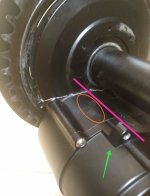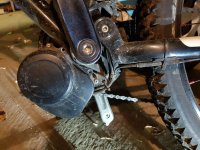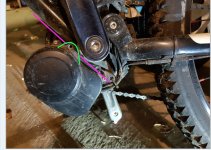Kisazul said:
Use a thread lock and check the fixing of bolts more often. I missed this moment and the body broke in half.


Wow !...... Superglue ? Duct tape ?
Im off to check that little 2 bolt bracket on the LH end of the BBracket !


i had not realised how critical it is to prevent any flex in the case.
I have a DS bike also that the chainstay clamp will not fit , so i use the "2 bolt" bracket as a torque plate with a tie link bolted up to the frame.
Im thinking now of making a solid packing piece to fit between the motor case and the bbracket shell to prevent any flexing of that gear housing/case that snapped.




